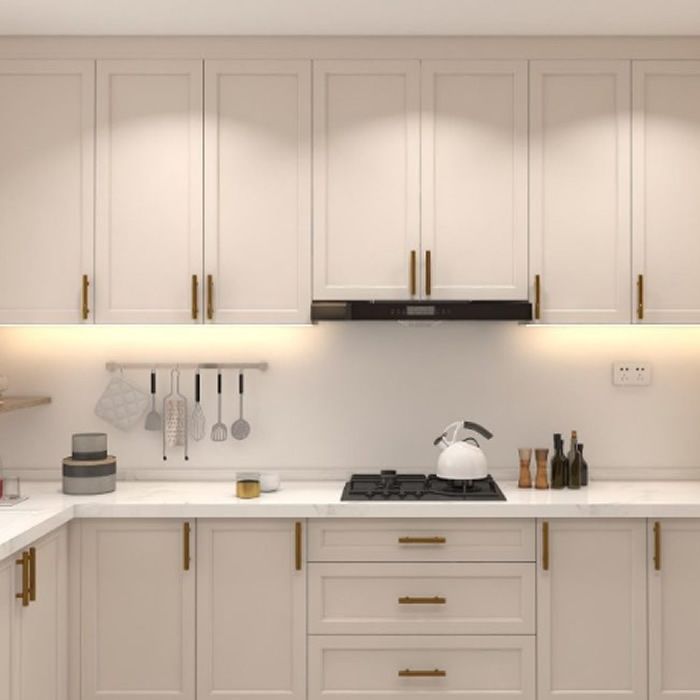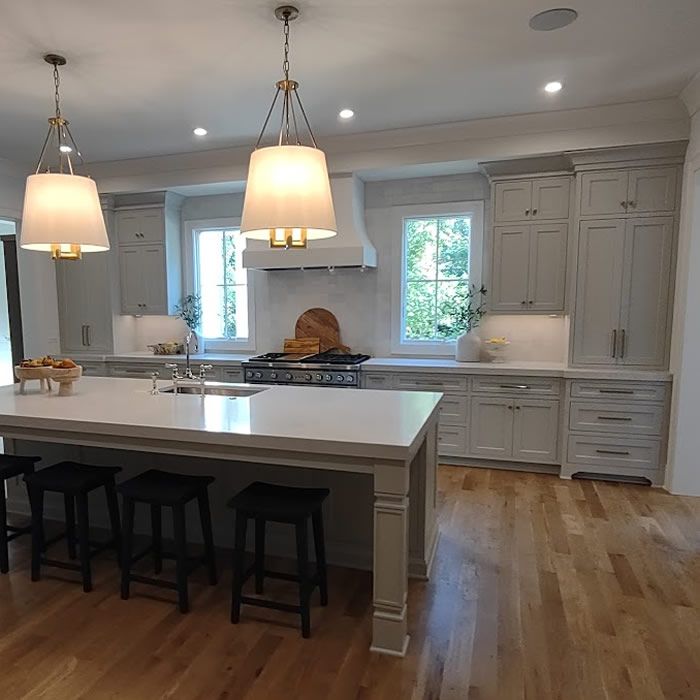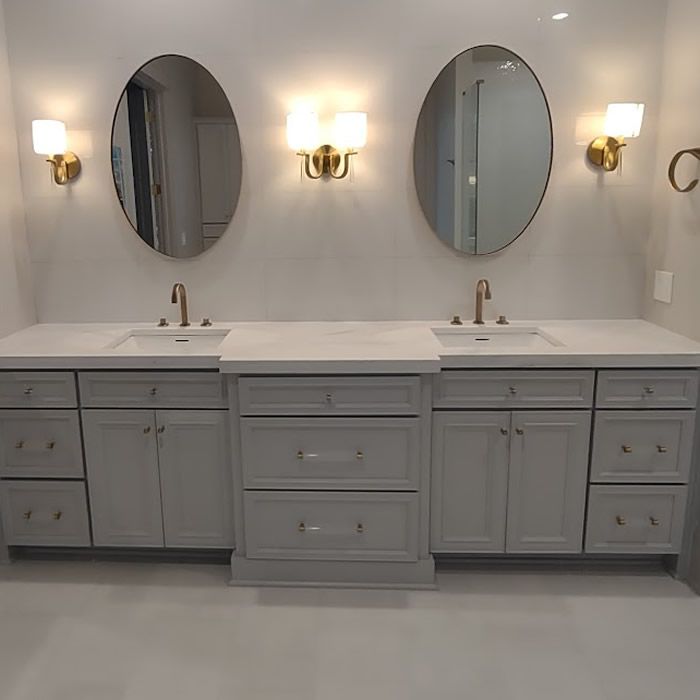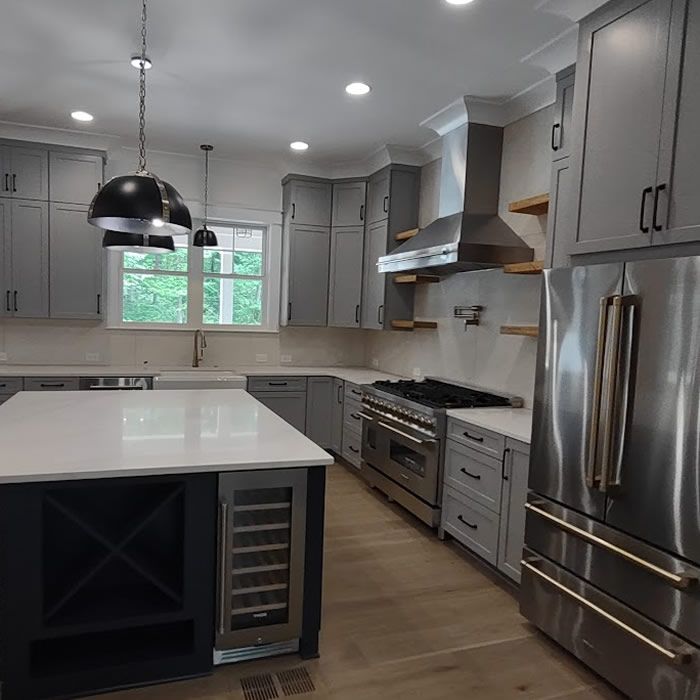Finding the Right Kitchen Cabinet
Finding the Right Kitchen Cabinet

Whenever you need to make a major purchase if you are budget-conscious — by choice or by necessity, the best (I would say, only) place to start is by accumulating as much information as you can about the available possibilities. When buying cabinets, an extremely important consideration is to be sure that the measurements you are working with of the involved area(s) are accurate. You certainly do not want to learn too late that your cabinet choices and/or the resulting layout of them might have better met your needs.
In straight-run base-cabinets, one consideration that should be a priority is, if at all possible, to include “roll-outs” (variably called roll-out shelves, trays, etc.) factory-installed inside them; this is because “roll-outs” provide much better accessibility to items stored there (but, if your budget will only allow one roll-out per cabinet, be sure to place it on the cabinet’s bottom level). But, in case you happen to not be replacing perfectly fine base cabinets which do not have “roll-outs”, all is not lost; that advantage can be added later via “inserts”. And, if you are then unable to find “inserts” from a manufacturer, they can be self-built and installed.
If you are remodeling your kitchen (or building anew), you may need to choose a corner cabinet although not all kitchens need them.For example, a “galley” kitchen is called that because the walls (holding cabinets and appliances) that make up the kitchen face each other and, therefore, preclude the need for corner cabinets. Another possible arrangement in this vein would be an “L-shaped” kitchen with a straight-run of cabinets along one wall and another straight-run of cabinets on a wall that is perpendicular to it but separated from it by a doorway or floor-to-ceiling window. Cabinets installed in a straight run do not pose the variety of choices that corner cabinets do; therefore, if your new kitchen, bathroom, or office needs a corner cabinet, having a list of the types of corner cabinets currently available should help you make an educated choice in their shape and size.
Beginning with base corner cabinets, we have: (1) the symmetrical easy reach — this cabinet is the same length on each side of the corner and contains either shelves along its rear walls or a carousel with shelves “pie-cut” to accommodate the doors (a center hinge allows opening either the first door or both); (2) the asymmetircal easy reach — this cabinet is a little shorter on one leg (if it includes a carousel, that diameter will be the length of the cabinet’s shorter leg); (3) the revolving — this cabinet is like cabinet #1 but its doors revolve with the carousel shelves; (4) the diagonal-front — this cabinet allows a full-circle carousel; and (5) the blind — this cabinet looks like a straight-run cabinet but it extends into the corner along the side of an adjoining cabinet, structure, or appliance thus making its “buried” shelves accessible only from the front door (to allow better use of the “blind” corner cabinet, some manufacturers have cleverly created a cabinet with a first section which, on opening the door, pulls out and pivots to the side to expose roll-out trays which can then move forward to present their contents). Finally, there is a sink base corner cabinet that can be either an “L-shaped” cabinet to hold a butterfly sink or a diagonal-front cabinet with a regular straight-line sink — a caveat whenever a corner sink cabinet is used: be sure that adequate standing area (for loading and unloading the dishwasher) is created by placing a 12-inch wide regular cabinet between the dishwasher and the corner cabinet’s side.
Wall corner cabinets include: (1) the diagonal-front — this cabinet has a modified pentagon shape (this is the one most frequently chosen for this position); (2) the easy reach — this cabinet appears to be two adjoining wall cabinets (it has a center hinge to allow opening the first door or both and allows direct access to the contents on the shelves); and the blind — half of this cabinet is buried in the corner itself and can be accessed only by the front door of the cabinet — this cabinet is the unfortunate choice in instances where structure or an appliance allows no other option.
In conclusion then, when choosing cabinets in general and wall or base corner cabinets in particular, your best choices will depend on the size and shape of available space, your budget and the items that you plan to store there. Additionally, you really should make every effort to: (a) be as fully informed as possible about your cabinet options and (b) carefully review all of your decisions before ordering any cabinets — whether or not you have bottomless pockets.
[http://www.accessdesignconnections.com]
Article Source: https://EzineArticles.com/expert/Alice_Merkel/963110
Article Source: http://EzineArticles.com/6912836



